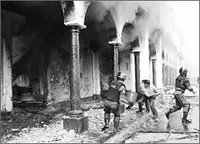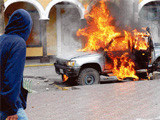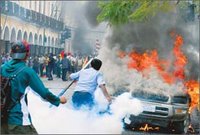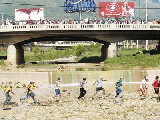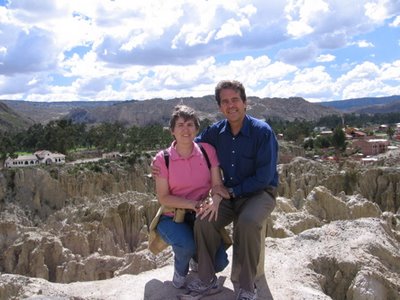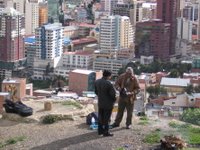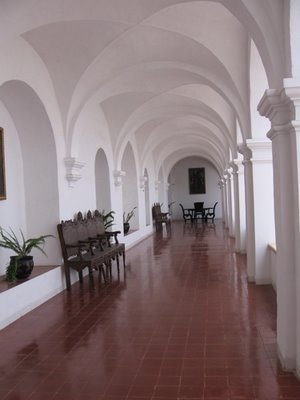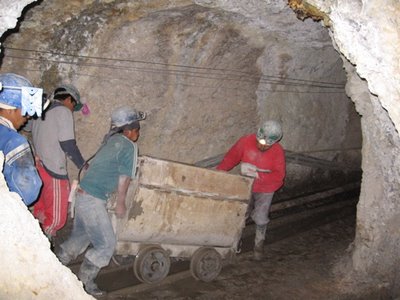
People start celebrating Carnaval here months before it arrives. Carnaval is technically a weekend-plus of events leading up to Ash Wednesday and the pentitential period of Lent. But Ash Wednesday is more than a month away, and the party officially kicked off yesterday in Santa Cruz with a big parade presided over by Carnaval Queen Andrea Abudinen (photo from El Deber). Actually, Andrea has been in the newspapers on practically a daily basis for months. She is photographed and written about wherever she goes. Yesterday there was a big article about the creation of the dress you see in this picture.
Carnaval is a very big deal. Maybe it's bigger in Rio de Janeiro, but the New Orleans version would probably pale in comparison to what's planned here in many cities of Bolivia.
I am told that in La Paz I will have to watch out for flying water balloons and in Santa Cruz for paint ball pellets, which evidently are outward expressions of inward joy of the season, the last blast of sensuous indulgence before the fasting and denial of 40 days of Lent. Although it doesn't appear that the indulgence here is always followed by self-denial.
The city of Oruro is known for its more folkloric type of Carnaval (photo here from Oruro festival website)

Here's a sample of some other culture.....We took a day to go to the town of Tarabuco, which is famous for its Sunday market of textiles, some of which we bought and took back with us. While there we also stopped at a local farmers' market and got a glimpse of big red plastic bags filled with coca leaves. We didn't see anyone working on the textiles while we were there, but we could see weavers working at the textile museum in Sucre.



In the mining city of Potosi we were startled to hear a stick of dynamite explode, but it was just to announce the start of a student demonstration against the leadership of the university. The students were protesting 5 percent pay raises for the faculty, and the notorious nepotism of the university president, which would mean reductions in expenditures on various services for students.
 Sucre is also famous around the world with students of dinosaurs. It has huge deposits of calcium-based rocks and material that is mined for concrete, and it was there that workers found footprints. There are trails several hundred meters long made by some of these beasts perhaps 100 million years ago.
Sucre is also famous around the world with students of dinosaurs. It has huge deposits of calcium-based rocks and material that is mined for concrete, and it was there that workers found footprints. There are trails several hundred meters long made by some of these beasts perhaps 100 million years ago.  While in Sucre on Jan. 6, we saw the city celebrate the Feast of the Three Kings, which celebrates the biblical story of the wise men from the East visiting the Christ child. Families go to church to have the priest bless their Jesus in the manger, and we ran into one family that had several.
While in Sucre on Jan. 6, we saw the city celebrate the Feast of the Three Kings, which celebrates the biblical story of the wise men from the East visiting the Christ child. Families go to church to have the priest bless their Jesus in the manger, and we ran into one family that had several.

It was also in Sucre at Liberty House, their equivalent of Independence Hall, that we got to see perhaps the biggest representation anywhere of the great liberator, Simon Bolivar, a bust in wood. Bolivia won its independence from Spain in 1825, thanks to Bolivar and a general named Sucre. The wall tapestry you see is one of the few done by men, a phenomenon of recent years.

